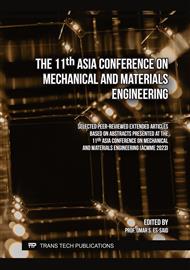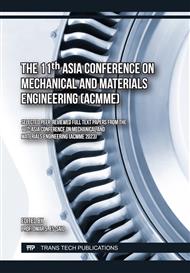p.3
p.9
p.17
p.23
p.33
p.39
p.47
Analysis of Ship Structure with GFRP Lamination Design Subjected to Underwater Shock Loading
Abstract:
FRP composite materials are still being continuously developed and researched, because FRP composite materials are non-magnetic and have good wave permeability, which can effectively achieve stealth and reduce the chance of being attacked. The underwater explosion impact of warships is a severe high-strain rate response. At present, most of the structural response simulations of underwater explosions are simulated with static material parameters. The static material parameters and dynamic material parameters in the tensile direction are obtained through the MTS material testing machine and the Hopkinson bar, and the other direction material parameters are obtained with Compose IT developed by BV certification. The results show that under the dynamic material parameters of LT800/M225 composite material with high strain rate, the stress and strain are both higher than those of the static test, and the stress-strain curves also have obvious differences in trends. Obtain the static and dynamic material parameters of LT800/M225, use ABAQUS to simulate the underwater explosion of the simplified ship model, and use the Tsai-Hill failure criterion to judge the material damage. The research results show that the failure time of the static or dynamic material parameters is similar, but the strain response of the dynamic material parameter simulation is more obvious than that of the static material parameter analysis. The research results of this paper can be used as a reference for subsequent research by composite material structure designers.
Info:
Periodical:
Pages:
23-29
Citation:
Online since:
January 2024
Authors:
Keywords:
Price:
Сopyright:
© 2024 Trans Tech Publications Ltd. All Rights Reserved
Share:
Citation:



